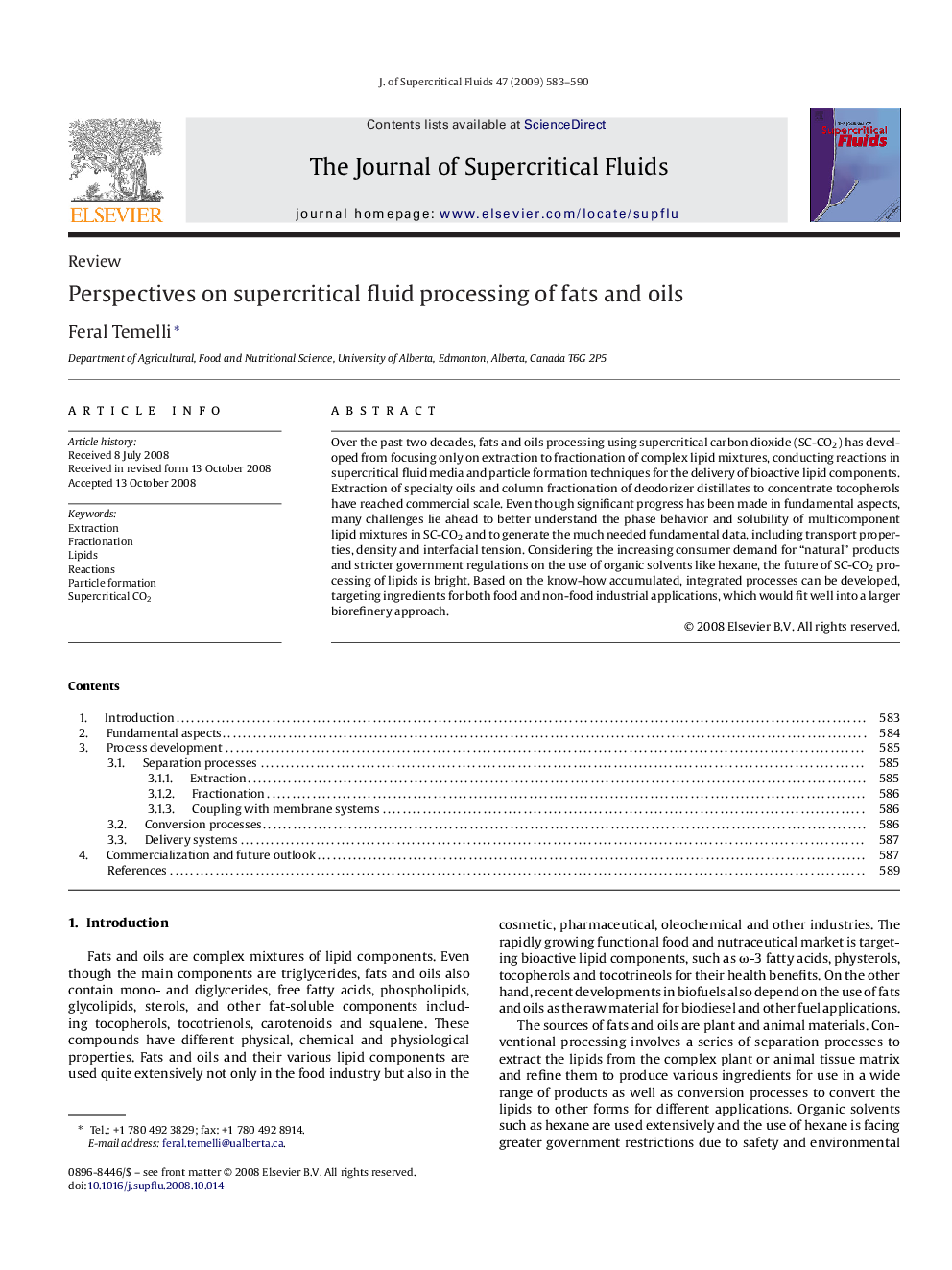| کد مقاله | کد نشریه | سال انتشار | مقاله انگلیسی | نسخه تمام متن |
|---|---|---|---|---|
| 231719 | 1427450 | 2009 | 8 صفحه PDF | دانلود رایگان |

Over the past two decades, fats and oils processing using supercritical carbon dioxide (SC-CO2) has developed from focusing only on extraction to fractionation of complex lipid mixtures, conducting reactions in supercritical fluid media and particle formation techniques for the delivery of bioactive lipid components. Extraction of specialty oils and column fractionation of deodorizer distillates to concentrate tocopherols have reached commercial scale. Even though significant progress has been made in fundamental aspects, many challenges lie ahead to better understand the phase behavior and solubility of multicomponent lipid mixtures in SC-CO2 and to generate the much needed fundamental data, including transport properties, density and interfacial tension. Considering the increasing consumer demand for “natural” products and stricter government regulations on the use of organic solvents like hexane, the future of SC-CO2 processing of lipids is bright. Based on the know-how accumulated, integrated processes can be developed, targeting ingredients for both food and non-food industrial applications, which would fit well into a larger biorefinery approach.
Over the past two decades, fats and oils processing using supercritical carbon dioxide (SC-CO2) has developed from focusing only on extraction to fractionation of complex lipid mixtures, conducting reactions in supercritical fluid media and particle formation techniques for the delivery of bioactive lipid components. Extraction of specialty oils and column fractionation of deodorizer distillates to concentrate tocopherols have reached commercial scale. Even though significant progress has been made in fundamental aspects, many challenges lie ahead to better understand the phase behavior and solubility of multicomponent lipid mixtures in SC-CO2 and to generate the much needed fundamental data, including transport properties, density and interfacial tension. Considering the increasing consumer demand for “natural” products and stricter government regulations on the use of organic solvents like hexane, the future of SC-CO2 processing of lipids is bright. Based on the know-how accumulated, integrated processes can be developed, targeting ingredients for both food and non-food applications, which would fit well into a larger biorefinery approach.Figure optionsDownload as PowerPoint slide
Journal: The Journal of Supercritical Fluids - Volume 47, Issue 3, January 2009, Pages 583–590